
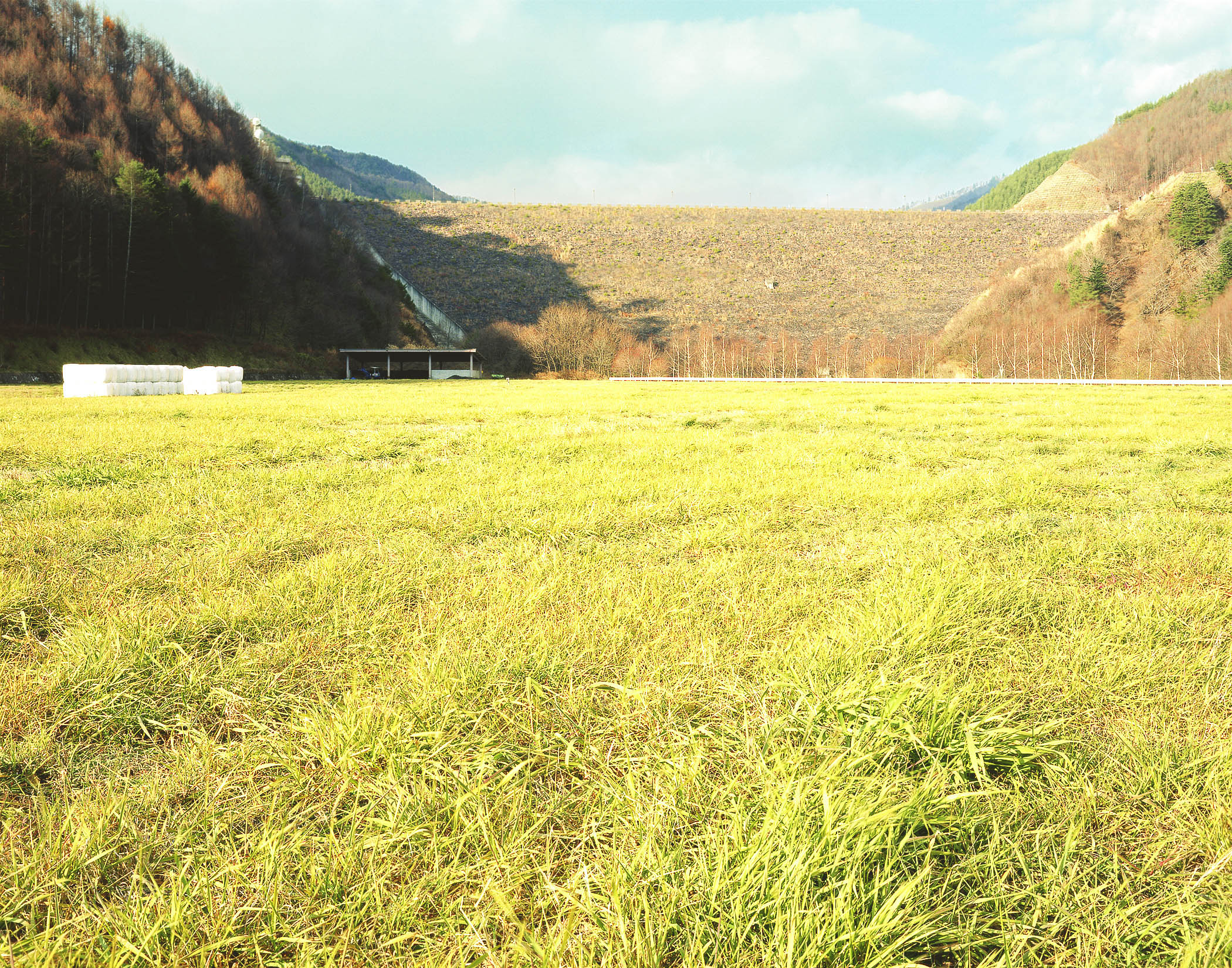
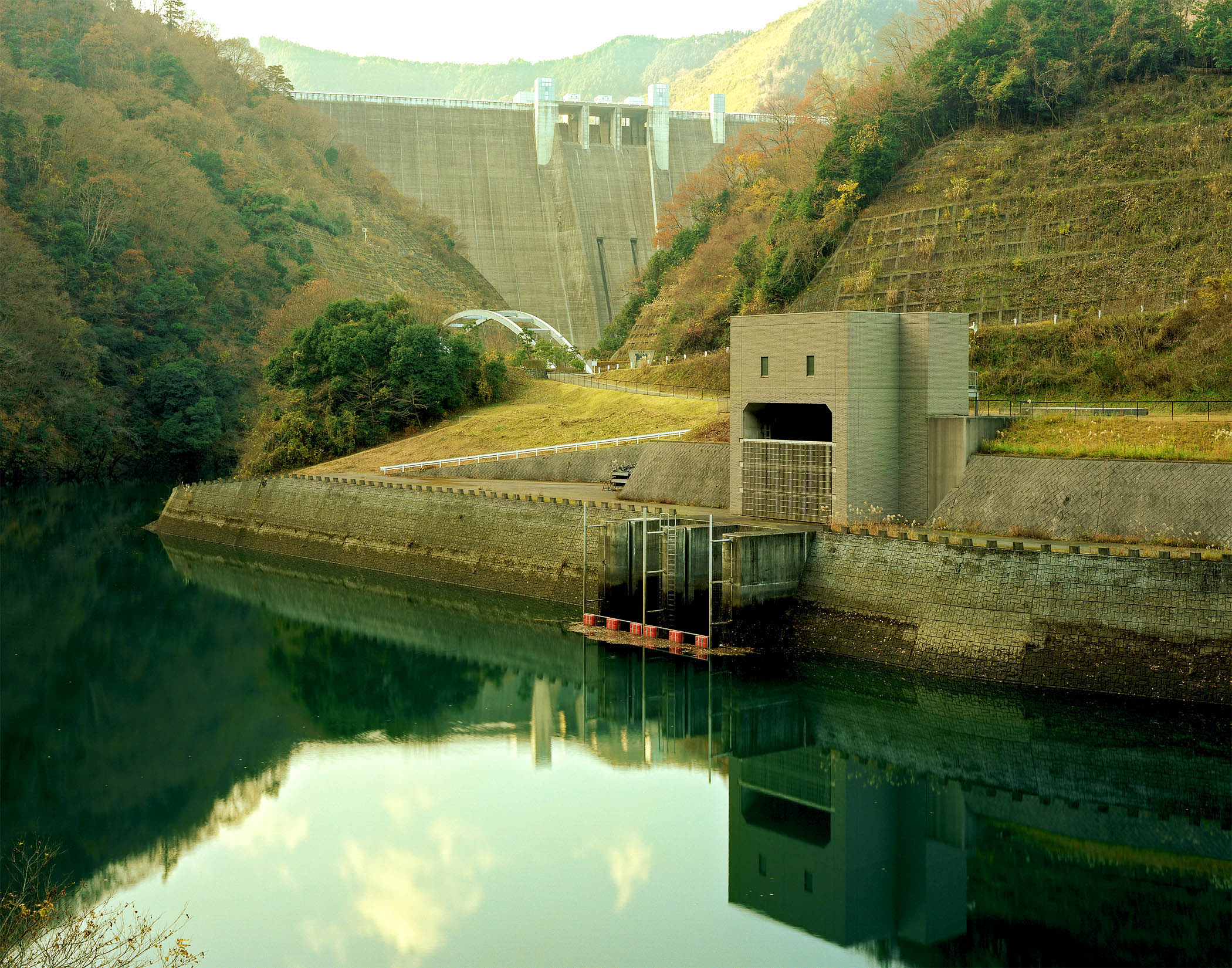
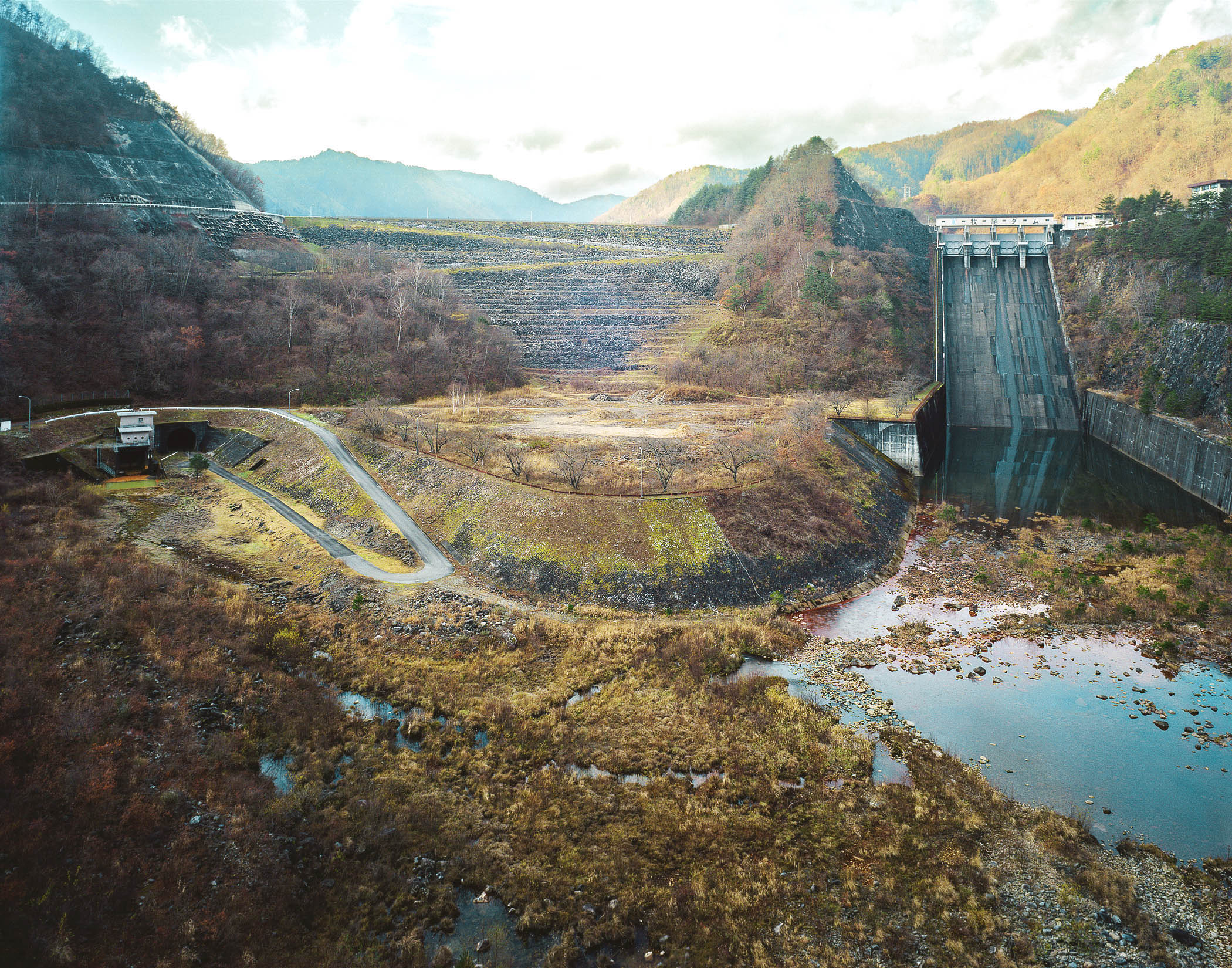
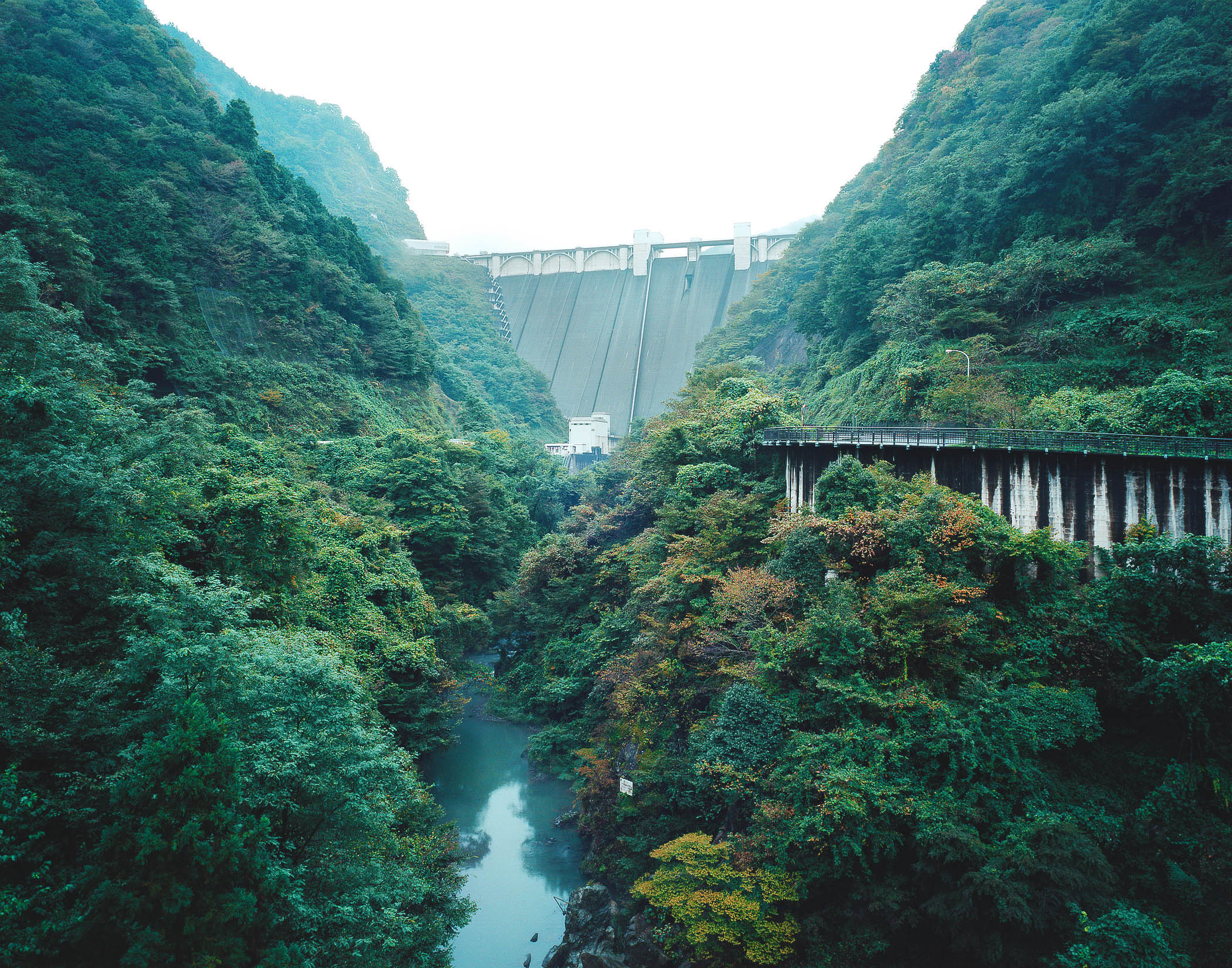
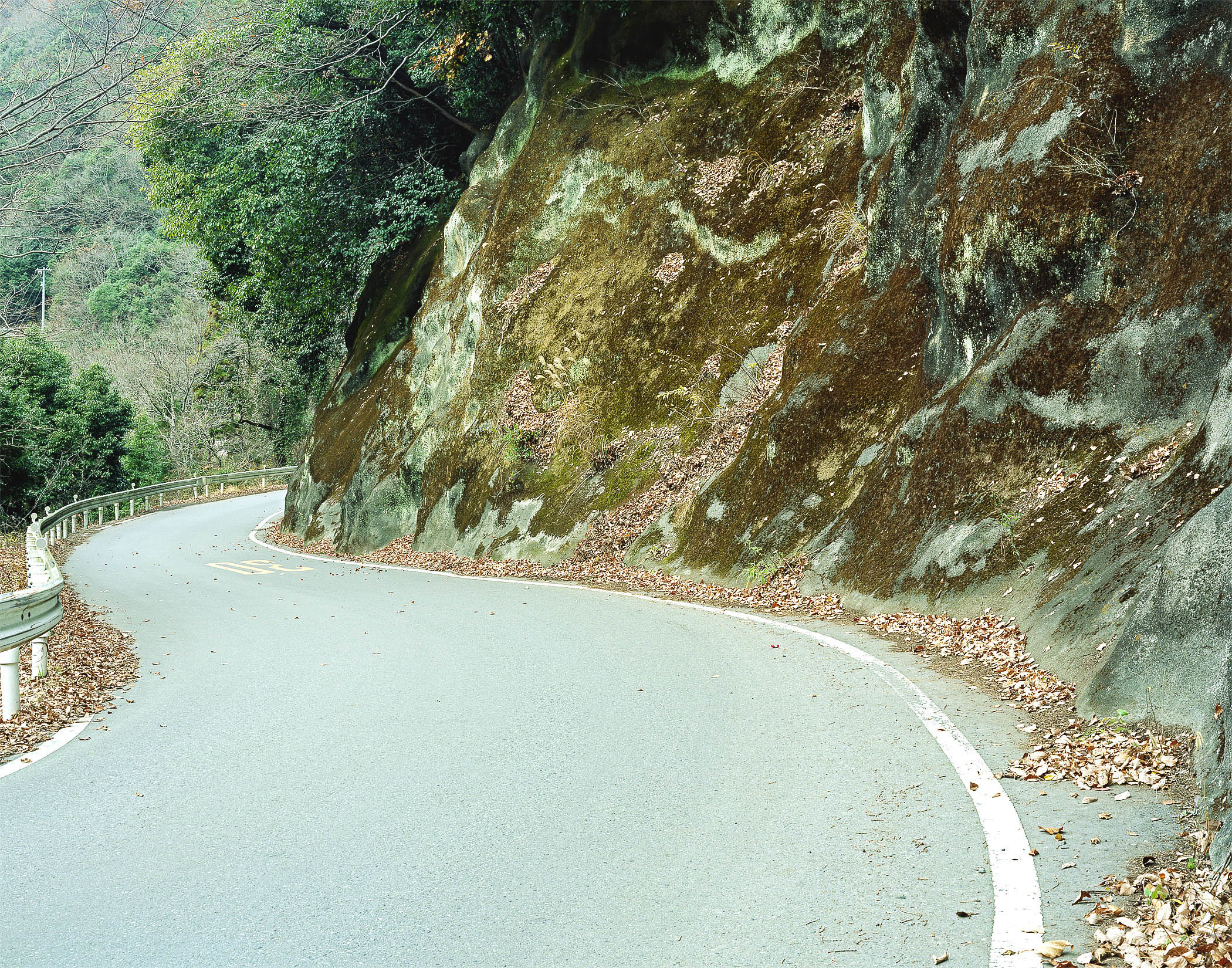
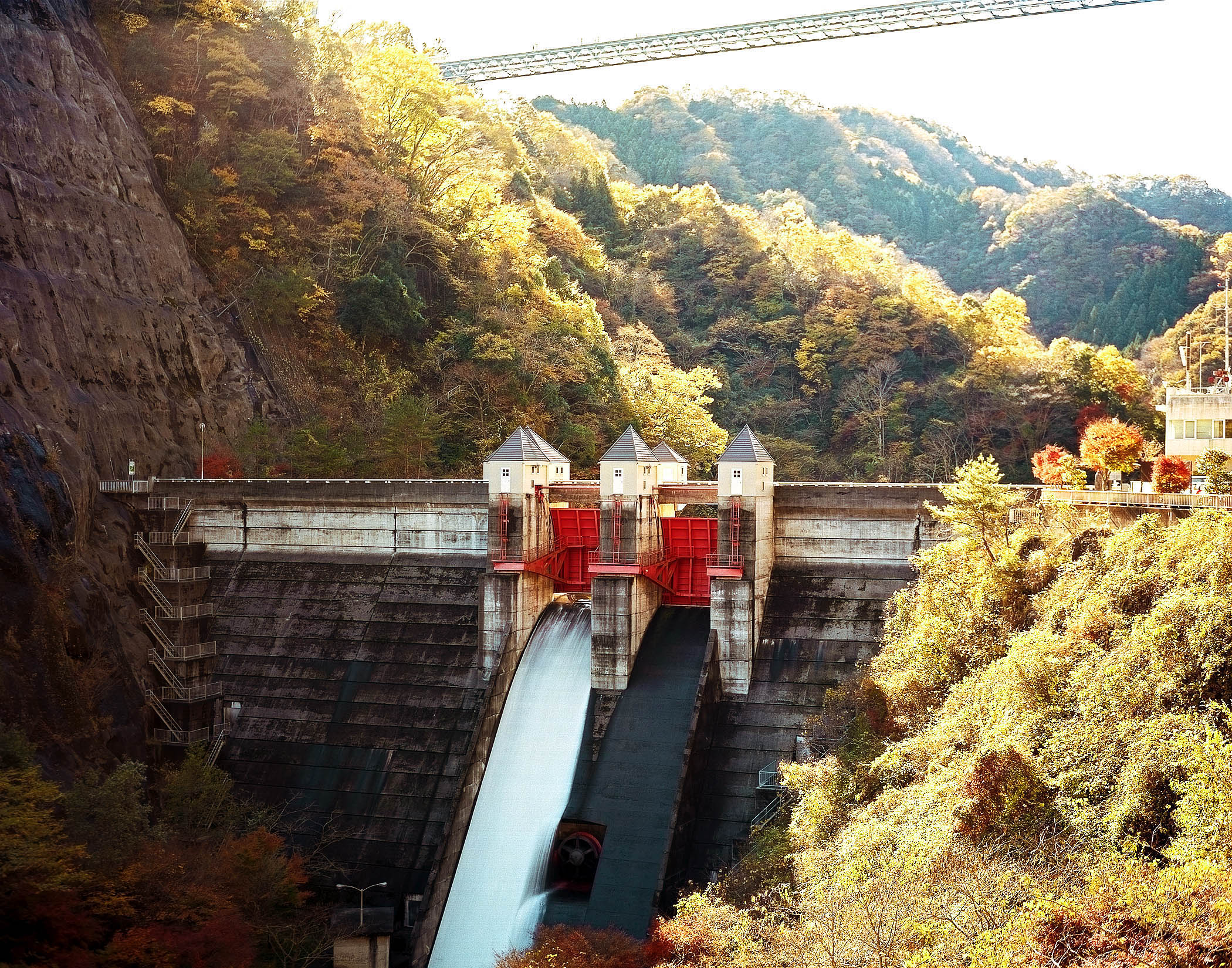
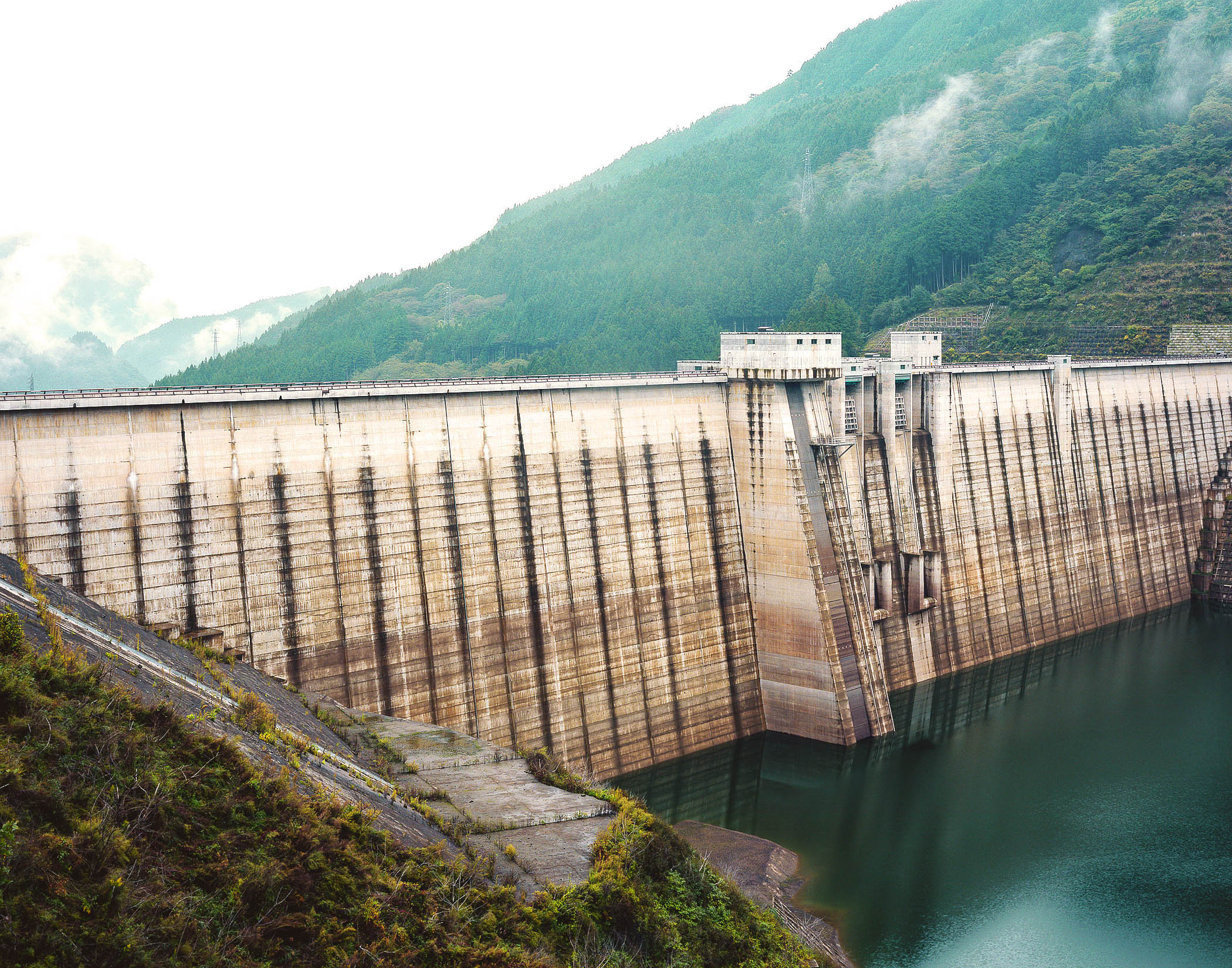
Till very recently, we thought that seisms as emotions were under control in Japan. It was yet impossible to imagine that the devastating Nature could punish such an admirable and calm country. That the earthquake-proof constructions could'nt resist to a superhuman force. That we would reach this point of non return ...
Without premeditation, RTR gallery presents Shunsuke Ohno's photographs. « Landamscapes » is his first personnal exhibition. We discover singular landscapes but especially a perception of beauty strongly inspired by buddhist culture. Shunsuke Ohno explains us landscapes in an infinitely pure and frontal manner. He makes us feel its essence.
In 2009 Japan counted around 2900 dams. These constructions grew in number even if it meant wiping a few villages off the map. The photographer travelled all over the country to discover these dams, all huge and made of concrete. Shunsuke Ohno's project was motivated by the book « Dogs and Demons » by Alex Kerr. The author reveals edifiyng rifts which wear down the country from the inside. The orientation of the critic is clearly plolitical and refers to verifiable elements : hard-surfaced rivers, constructions of dams and roads which drive nowhere … but absorb the taxpayer money.
With the curiosity of the reporter and the sensitivity of the walker, Shunsuke Ohno dashed into a photographic pilgrimage. That’s how he found himself fascinated by the landscapes offered to him, enchanted by their strength , though destructive : the hand of Man posed on Nature. At first, embarrassed by the idea of admiring such a harmful landscape, he finally let himself elated by the beauty of the place, as one kisses the devil's hand. « When I drove that road which took me from a city to another, I crossed villages, mountains, bridges, tunnels and then dams. That's when the stressful state of mind I had been in from the city changed into a peaceful one : the feeling that you have to take things as they stand, as they are offered to you. »
« Landamscapes » drives us in a hazy wonderland, hidden under autumn leaves. Like a character of a fairy tale who discovers a universe by picking a stick up, the viewer is transported to a Star Wars like scenery. Dams, these structures entirely designed by Man (whose presence remains elusive) look like deserted space stations. The bright colours have nothing natural. The roads become rivers, the bridges, vegetation, the leveled and tamed ground - everything seems to be flowing and moving along to follow the shapes drawn by the dams. From an image to another, the waterfalls resound and calm us down.
Shunsuke Ohno’s photographs have the amazing power of calling upon all our senses. They discreetly immerse us in a state of contemplation and uplift us further. In a photographic meditation on the height of Buddhist values. Shunsuke says : « In the old times, we used to have traditional techniques in Japan to build a house with paper and timbers . There are still some unique examples such as Naiku in Ise Jingu where the ancestral kami of the Imperial Family is worshipped. Traditions do not disappear, but times have changed and modern building techniques have mostly shifted to the use of concrete as it is earthquake-proof, fireproof and cheap. » Surprisingly, the historic interlude doesn’t pass any judgment. And even if « Landamscapes » reveal a point of no return, it’s always the same balance that shows up and give free rein to a space of pure contemplation.
The stamp of Man on Nature,the expanses of concrete on mountains, the water spreading from the dams - Ohno captures the elements in their harmony and puts the light on this bond which ties them up. The photographer explains that dams are definitely linked to our everyday life. Even if we tend to forget it : « It is so natural that water runs when you turn a water tap ! And yet this water directly comes from a dam ». Without falling into the accusing tone of environmental problematics neither in ostentatious provocation, Shunsuke Ohno prefers to guide the viewer. He offers a sublime story, a discrete and true reflection. Though neither visionnary nor moralist, we find in Ohno this dignified humanism. A la Japonaise.
